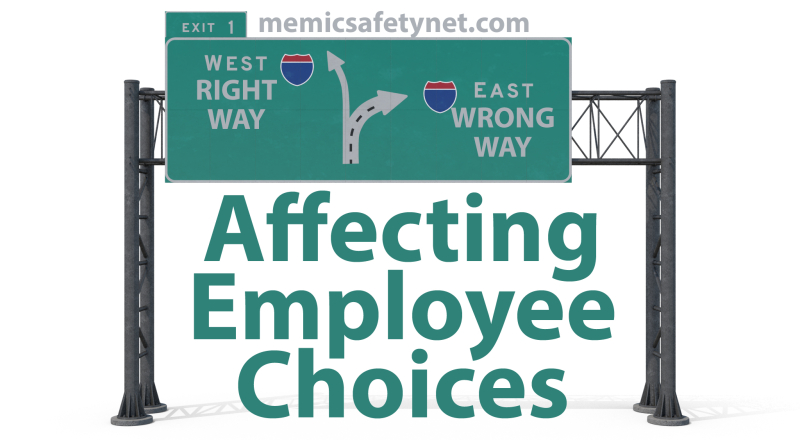Affecting Employee Choices
Choices, choices, choices...
“The history of free men is never really written by chance but by choice..." Dwight D. Eisenhower
It only takes a second to make a choice, right or wrong, and that second can determine the difference between a success and a failure. Every employee, and every supervisor, makes decisions every day. Once clocked in, like it or not, the choices employees make become the supervisor’s responsibility. The sad truth is that the majority of workplace injuries are caused by unsafe behavior rather than by unsafe conditions.
In the event of an injury, consider what drove the choice(s) that resulted in the injury. What changed to cause the injury or loss? Could it have been business levels, environmental or working conditions, or fatigue? Could it have been staff becoming more comfortable with their job or their working conditions? Though these reasons may be uncovered in the accident analysis, they are all normal evolutions of our work climate, which can be anticipated and controlled.
Keeping a balance between safety, production, and quality should be the goal for every organization. Often employee choices are made based solely on production. This is especially true when businesses are very busy or when deadlines are looming. Supervisors must set clear expectations for their staff that include all three elements and fight the temptation to push production above all else. When production wins out over safety, the result is often a workplace injury. Of course this leads to a decrease in production due to the rise in costs, time away from work, workers’ compensation costs, damaged equipment, or other production delays.
How can you influence the choices that cause workplace injuries? Here are some questions to assess what areas of the performance management process might have changed:
- What did you do early on in their employment to affect the choices made by your staff? Are performance expectations clearly defined and communicated to the employees?
- Are you continually repeating the message(s)? Are they still listening?
- How ingrained is the safety message/culture you want to have?
- Have you observed the behavior of the staff in the field and compared it to the expectations?
- Have you thoroughly discussed and analyzed the targeted losses from your company with your staff?
- Have you been able to focus the discussion on the choice that caused the event, or the conditions that drove the choice?
Influencing choices and changing behavior starts with developing policies and procedures that address expected job performance and prohibit behaviors that are not essential for the job or are excessively hazardous. This is a necessary—and critical—part of managing work-related risk.
Take a minute to review what you do to affect the daily choices of your staff. Start with the policies and procedures and move on to how you continually communicate the expectations of the job. What can you do to enhance what you have done? Can you be more effective at influencing the decisions your staff must make in the field once they punch the clock?
For more information about preventing workplace injuries check out the resources available within the MEMIC Safety Director.


